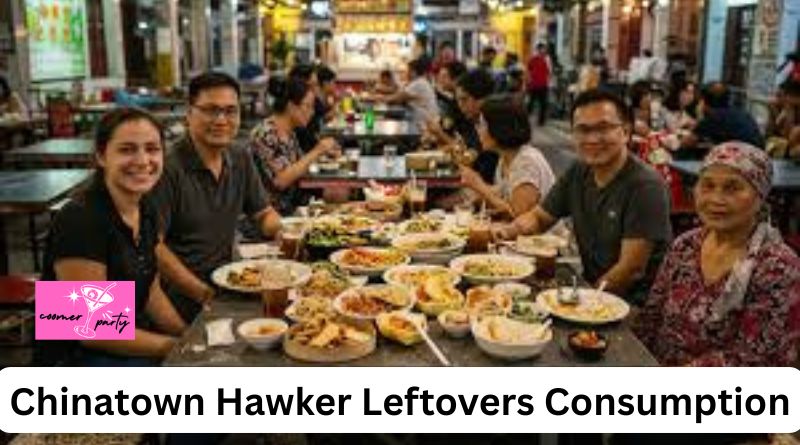In the heart of Singapore, Chinatown is known for its vibrant culture, bustling streets, and, of course, its world-famous hawker centers. These culinary hotspots offer affordable and diverse dishes to residents and tourists alike. However, a growing concern that remains largely in the shadows is chinatown hawker leftovers consumption—a practice where leftover food is either consumed by vulnerable individuals or informally redistributed. This issue raises questions about food waste, hygiene, sustainability, and social inequality.
The Daily Grind at Hawker Centres
Chinatown’s hawker centers are constantly abuzz with activity. From dawn till dusk, stall owners work tirelessly to serve thousands of meals. While most food is consumed on the spot, a significant portion ends up uneaten and eventually discarded. This leftover food, often still edible, becomes part of the mounting food waste problem that Singapore faces.
In this context, chinatown hawker leftovers consumption has emerged as both a survival tactic and a symbol of wasted abundance. Some individuals—often elderly, low-income, or homeless—are seen quietly collecting food left on trays or in return bins. While this practice may seem shocking to some, it highlights an underlying issue: why is edible food being wasted while people go hungry?
Health, Hygiene, and Legal Concerns
Despite the intentions behind consuming leftovers, public health experts warn about the potential dangers. Food that has been left out at room temperature for too long can harbor bacteria, posing risks of food poisoning or other illnesses. This has led to debates about the safety and ethics of chinatown hawker leftovers consumption.
From a legal and regulatory standpoint, hawkers are not permitted to redistribute leftover food to the public, due to strict hygiene laws and liability concerns. Even if the food looks untouched, once it has left the kitchen and reached a customer’s table, it cannot be reused or donated. This regulatory framework creates a dilemma where perfectly edible food must be discarded, even though someone else could benefit from it.
Environmental and Ethical Implications
Wasted Food, Wasted Resources
Singapore generates over 800,000 tonnes of food waste each year, much of which could be reduced with better food management systems. Leftover meals at hawker centers contribute to this growing issue. When food is thrown away, not only are the ingredients wasted, but so are the water, labor, and energy used to prepare it.
The chinatown hawker leftovers consumption phenomenon underscores a deep contradiction: while food waste climbs, segments of the population remain food insecure. This has inspired community groups and environmental advocates to push for solutions like food donation programs, community fridges, and food rescue efforts to bridge this gap.
Social Stigma and Human Dignity
People who engage in chinatown hawker leftovers consumption often do so discreetly, knowing that their actions may be looked down upon or misunderstood. For many, it’s a last resort, not a choice. The act reflects larger social issues, including poverty, loneliness, and exclusion from the economic mainstream.
Addressing the root of the problem involves more than reducing waste—it requires building a more inclusive support system for vulnerable individuals. Community-based programs that respect both food safety and human dignity can help shift the narrative from shame to sustainability.
Bridging the Gap Between Waste and Hunger
Efforts to curb chinatown hawker leftovers consumption must be multi-faceted. Public education campaigns can raise awareness about responsible consumption. Government policies could be revised to support safe food redistribution. Additionally, local organizations can partner with hawkers to create a more structured approach to donating surplus food safely.
If food rescue programs can be scaled up, and legal protections provided for food donors, the amount of edible food going to waste could be significantly reduced. At the same time, fewer people would feel the need to resort to consuming leftovers in unsanitary conditions.
Conclusion
The issue of chinatown hawker leftovers consumption is a microcosm of larger societal challenges surrounding food, poverty, and sustainability. While it’s easy to dismiss this practice as unsanitary or marginal, it actually opens the door to a broader conversation about how society values food—and people. By addressing this problem with compassion, practicality, and innovation, Singapore can take a meaningful step toward becoming a more sustainable and caring society.

